Have you ever wondered what is the scariest spider in the world? If you are arachnophobic, then this thought might make your skin crawl. Spiders are some of the most feared creatures on Earth and have been known to induce intense fear in many people. In this article, we will uncover the most terrifying spiders in existence and explore why they are so feared. Read on to learn more about the scariest spiders in the world!
Overview of Spiders
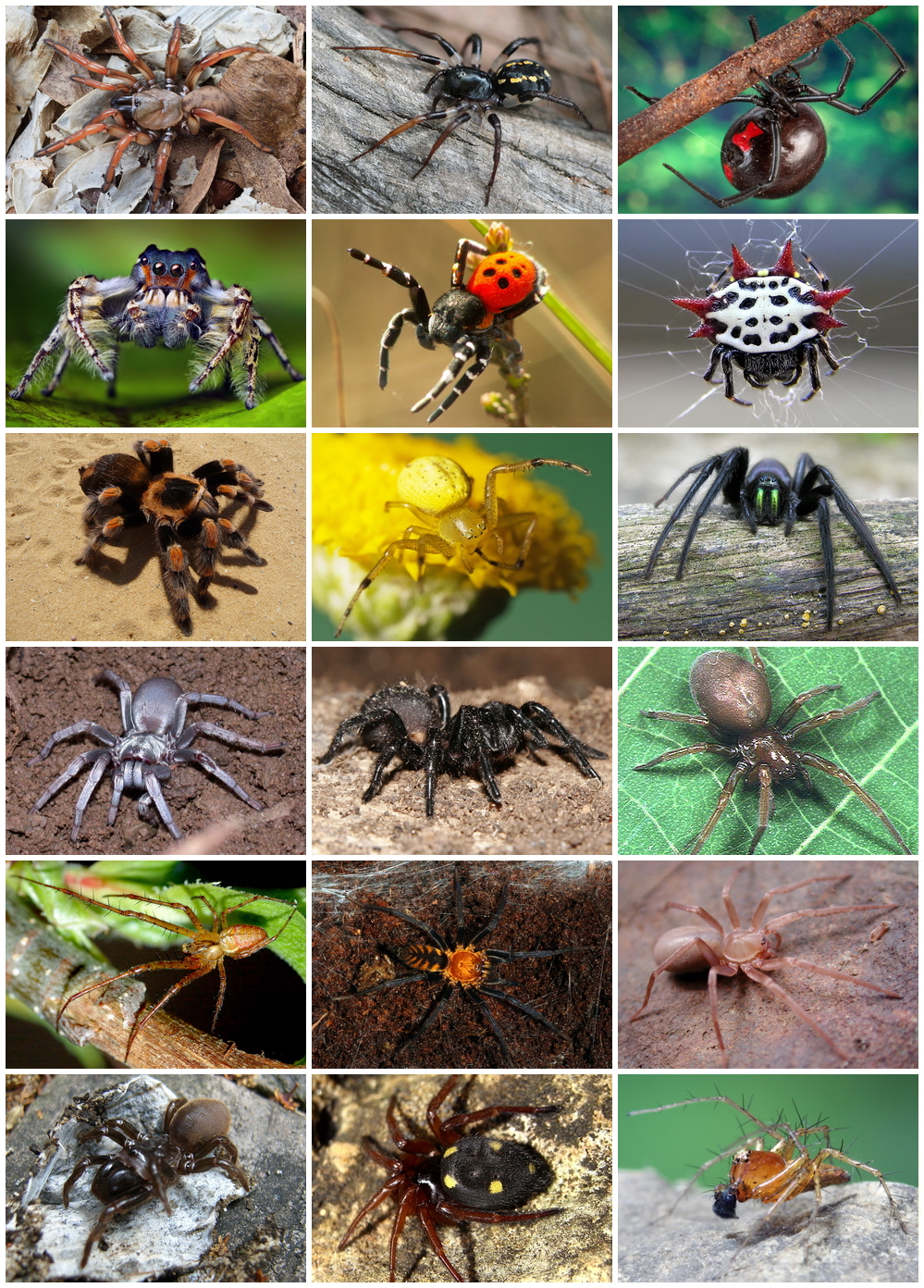
Spiders are arachnids, meaning they have eight legs, two body segments, and no wings or antennae. They are predators and feed on insects and other small animals. Most spiders spin webs to catch their prey, but some actively hunt prey. Spiders can range in size from a few millimeters to several centimeters in length. They can be found in a variety of habitats, including deserts, forests, and even in homes. Some species are venomous and can cause mild to severe symptoms in humans.
Types of Spiders
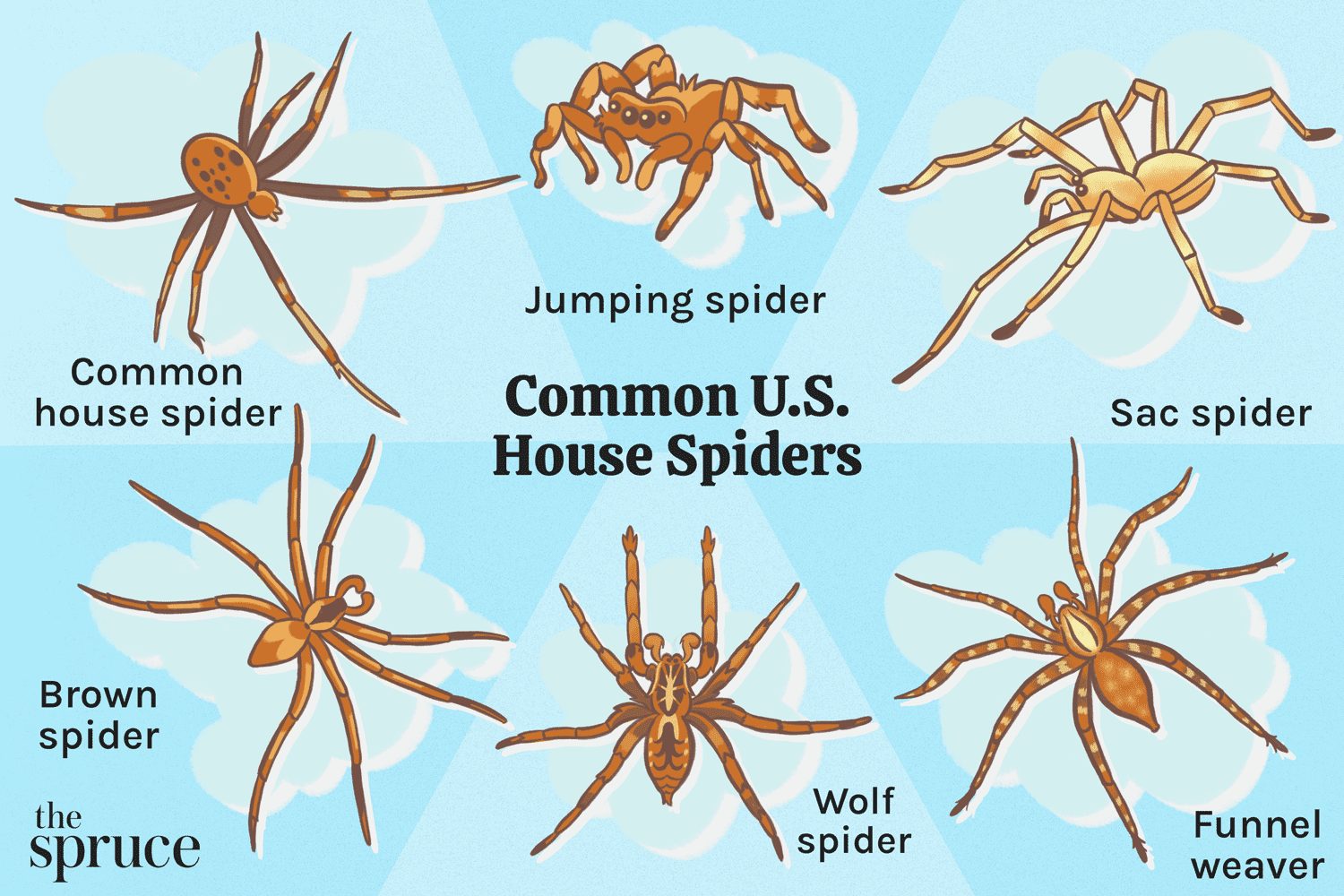
- Wolf spiders
- Tarantulas
- Black Widows
- Recluse spiders
- Jumping spiders
- Sac spiders
- House spiders
- Cobweb spiders
- Huntsman spiders
- Garden spiders
Wolf spiders are common and can be found in many parts of the world. They are large, hairy, and fast, but not particularly aggressive. Tarantulas are another large and hairy arachnid, with long legs, and are often kept as pets. Black Widows are venomous spiders with a distinctive red hourglass marking on their abdomen. Recluse spiders are venomous, brown spiders that are often found in dark, undisturbed areas. Jumping spiders are small, brightly colored spiders that can jump large distances. Sac spiders are small yellow-green spiders that build silky sacs in which they hide and hibernate. House spiders are small spiders that can often be found in the corners of rooms and closets. Cobweb spiders are usually small and brown, and build messy webs in which they hide. Huntsman spiders are large, hairy spiders that are often seen on the outside of homes. Garden spiders are brightly colored, often with yellow and black stripes, and build large webs in gardens and yards.
How Spiders Are Classified
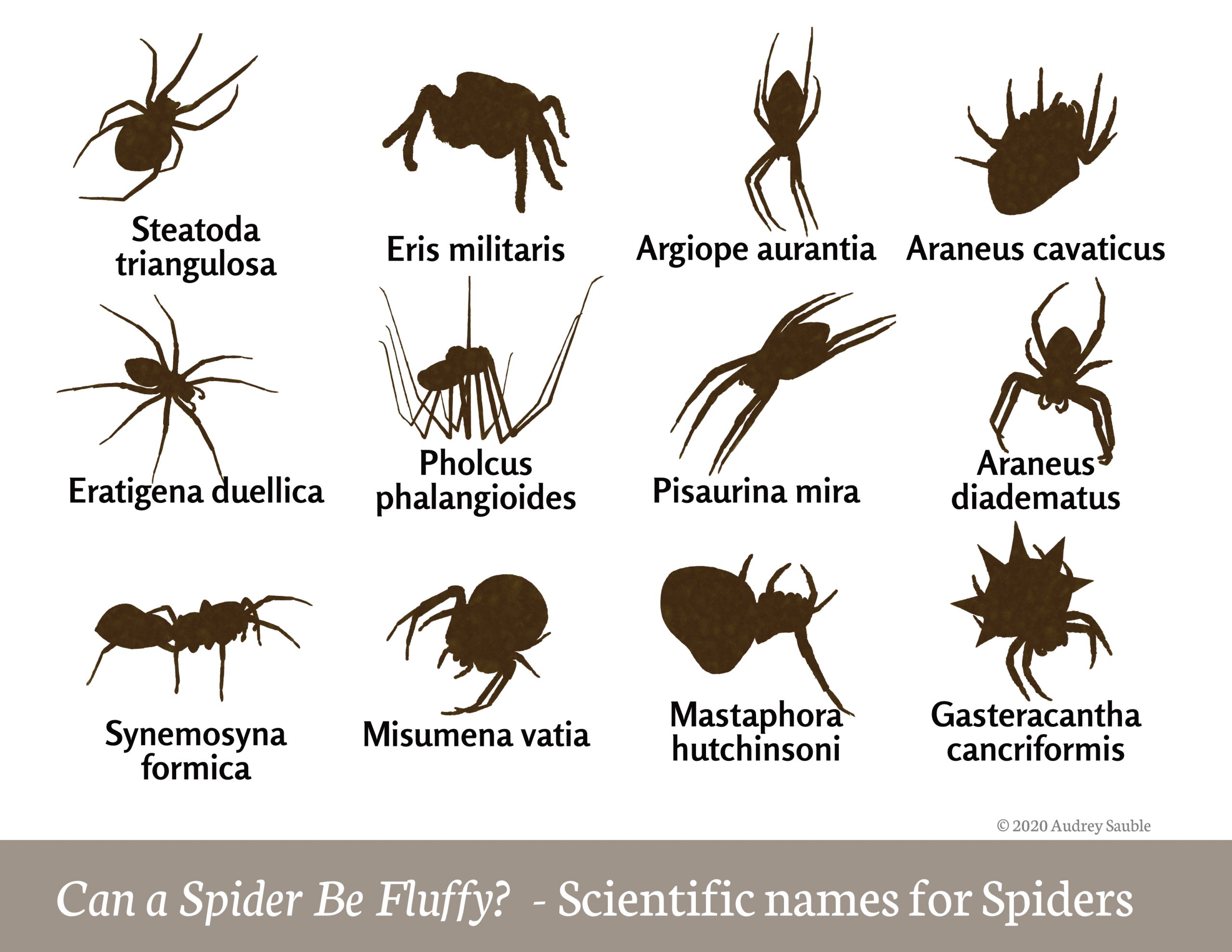
Spiders belong to the group of arthropods called arachnids. They are classified into two main groups – true spiders and other arachnids. The true spiders are further divided into three suborders: Mesothelae, Mygalomorphae and Araneomorphae. The Mesothelae are the most primitive of the three, and comprise of only about 40 species. They have several features that set them apart from the other two suborders, such as longer legs and a lack of spinnerets. The Mygalomorphae are the second suborder, and they are generally bigger and stockier than the Araneomorphae. They have well-developed chelicerae, or pincer-like jaws, and two pairs of book lungs. The Araneomorphae are the third and largest suborder, and they include the majority of spider species. They tend to be smaller and more agile than the other two suborders, and have a single pair of book lungs and spinnerets for making webs.
Common Spider Species
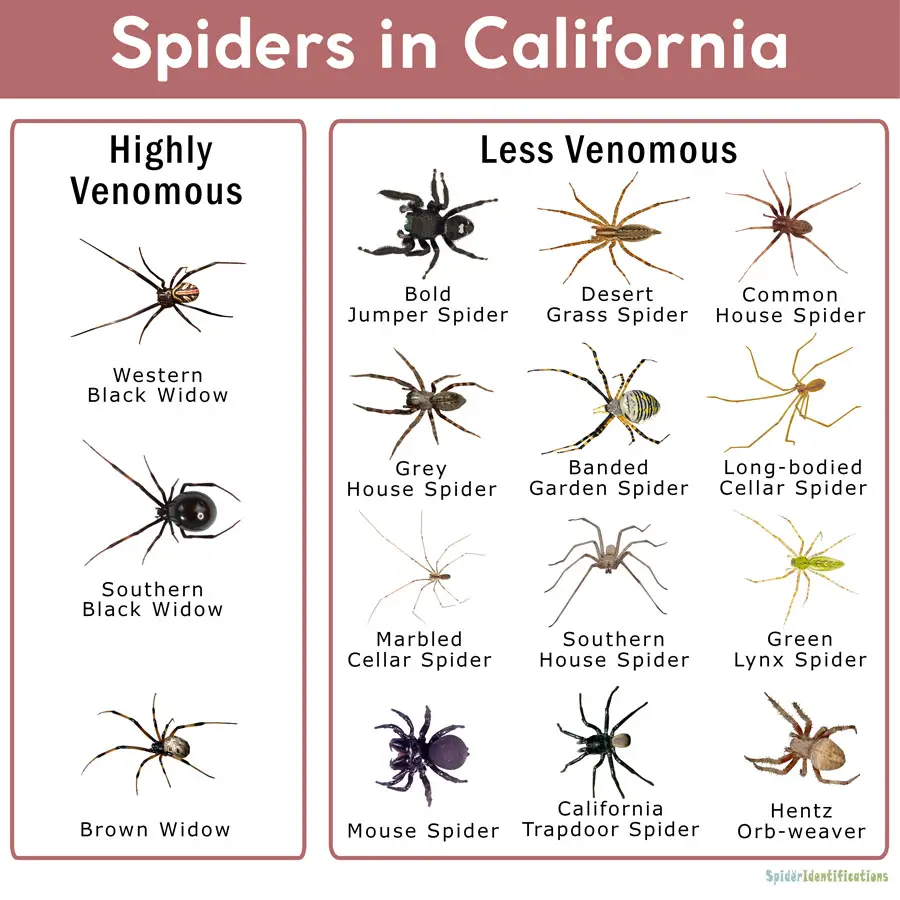
| Species | Description |
|---|---|
| Wolf spider | Large, hairy, nocturnal spiders that usually live in burrows or under rocks |
| Giant house spider | Large spiders with long legs, found in homes and other buildings |
| Brown recluse spider | A venomous spider with a violin-shaped marking on its back, found in the U.S. |
| Jumping spider | Small spiders with big eyes, found in homes and gardens |
| Hobo spider | Large spiders with a patterned abdomen, found in the northern U.S. |
| Black widow spider | A venomous spider with a red hourglass-shaped marking on its abdomen, found in the U.S. |
Wolf spiders, giant house spiders, brown recluse spiders, jumping spiders, hobo spiders, and black widow spiders are some of the most common spider species. Wolf spiders are large, hairy, nocturnal spiders that usually live in burrows or under rocks. Giant house spiders are large spiders with long legs, found in homes and other buildings. Brown recluse spiders are a venomous species with a violin-shaped marking on its back, found in the U.S. Jumping spiders are small spiders with big eyes, found in homes and gardens. Hobo spiders are large spiders with a patterned abdomen, found in the northern U.S. Black widow spiders are a venomous species with a red hourglass-shaped marking on its abdomen, found in the U.S.
Characteristics of Scary Spiders

- Large body size
- Hairy or spiny legs
- Brightly colored body
- Long, thin legs
- Quick movements
- Prominent eyes
- Aggressive behavior
- Venomous bites
Spiders that are considered to be among the scariest in the world have certain characteristics that make them stand out from other arachnids. These include a large body size, hairy or spiny legs, brightly colored body, long and thin legs, quick movements, prominent eyes, aggressive behavior and venomous bites. All of these characteristics make them a formidable predator and can easily cause fear in humans.
Scariest Spider Species
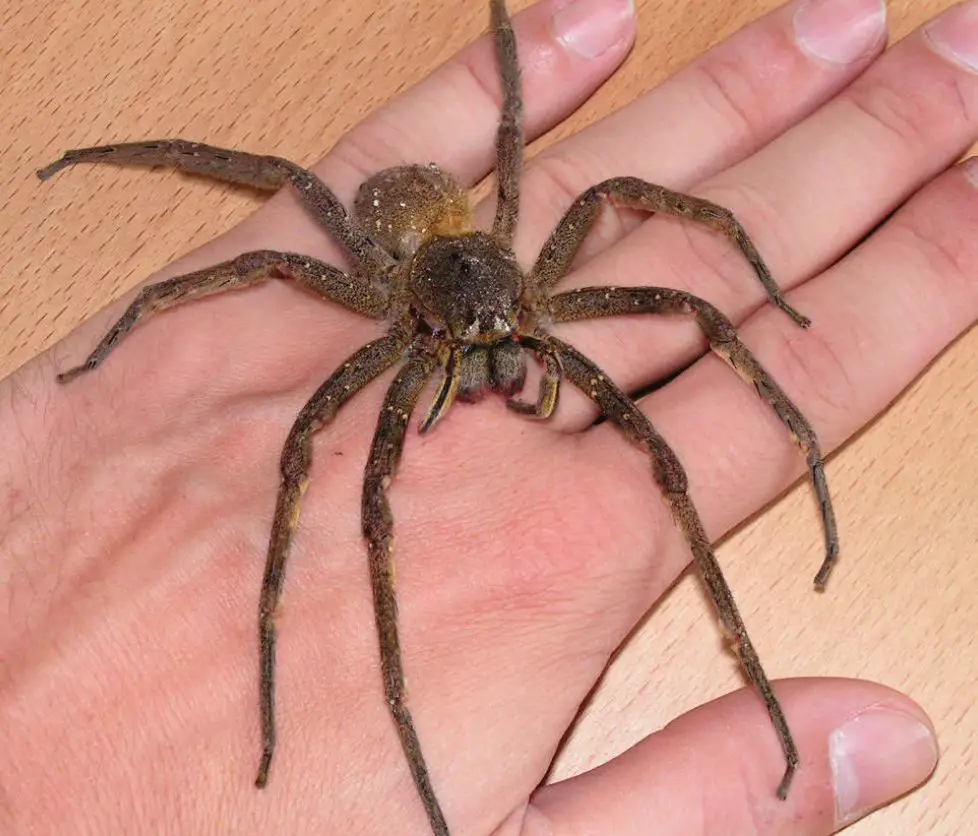
- Goliath Birdeater (Theraphosa blondi) – Found in South American rainforests, this spider is the world’s largest by mass, reaching up to 11 inches in leg span.
- Brazilian Wandering Spider (Phoneutria spp.) – Also known as the banana spider, this spider is native to Central and South America and is considered the world’s most venomous spider.
- Six-Eyed Sand Spider (Sicarius spp.) – Found in the deserts of Southern Africa, this spider buries itself in the sand and waits for prey to come within range.
- Mouse Spider (Missulena spp.) – This Australian spider is closely related to the Sydney Funnel-Web spider and is known to be aggressive.
- Tarantula (Aphonopelma spp.) – Found in tropical and desert regions around the world, tarantulas are large, hairy spiders that can inflict a painful bite.
Habits and Behaviors of Scary Spiders
- Spiders often hide in dark, secluded places like attics, basements, and closets.
- They use webs to catch prey and can build large webs in a short amount of time.
- They move quickly and unpredictably, making them difficult to spot and capture.
- Spiders are nocturnal, so they are most active at night.
- They can leap long distances to escape danger.
- Some spiders are venomous and can inflict painful bites.
- They can survive for long periods of time without food and water.
- Spiders have excellent eyesight and can detect movement from far away.
- They have powerful fangs and can inject venom into their prey.
- Spiders communicate with one another through vibrations and scents.
How to Avoid Scary Spiders
- Check your home regularly for spiders and webs.
- Keep your home and yard clean and free of clutter.
- Fill any cracks, crevices, and holes in your home.
- Use a vacuum cleaner to remove spiders and webs.
- Check for spiders when moving furniture and boxes.
- Cover your windows and doors with screens.
- Avoid leaving food and water sources out.
- Reduce lighting around your home at night.
- Use a spider repellent in your home and yard.
- Call a pest control expert to remove any spiders.
Frequently Asked Questions
What makes the scariest spider so terrifying?
The scariest spider in the world is the Brazilian wandering spider, scientifically known as the Phoneutria. It has a venom that is incredibly potent, capable of causing extreme pain, nausea, and even death. Its large size, aggressive behavior, and ability to climb walls and ceilings make it particularly dangerous. It is also known to hide in shoes and clothing, which heightens the risk of being bitten. Furthermore, the Brazilian wandering spider is considered one of the most venomous spiders in the world.
What are some of the most common traits of the scariest spiders?
Scariest spiders are typically large and hairy, with long legs and often a venomous bite. They tend to live in dark, isolated places, and can be active during the night. Many have a tendency to jump or lunge when threatened, which can be terrifying and dangerous if they get too close. Some of the most feared spiders are the black widow, tarantula, and brown recluse.
What types of environments do these spiders typically inhabit?
Scariest spiders in the world typically inhabit dark, moist areas such as hollow logs, crevices in rocks, and leaf litter. They can also be found in cellars, closets, and basements of homes.
Are there any precautions to take when encountering the scariest spider?
When encountering the scariest spider, avoid touching or provoking it. Do not attempt to capture it as this can be hazardous. Wear protective clothing, like long sleeves and long pants, to reduce the risk of being bitten. Make sure to carefully inspect your shoes and clothing to ensure that the spider has not crawled into them. If you do encounter one, move away slowly and avoid disturbing it.
How does the ugliest spider compare to the scariest spider?
Ugly spiders are typically not considered as dangerous as their scarier counterparts. While they may look unappealing, they are usually harmless and won’t cause any real harm to people or pets. The scariest spiders, however, can be highly venomous and even potentially fatal if not treated properly. They are generally much larger and have a more intimidating appearance. They can also be more aggressive and are more likely to bite if provoked.
Conclusion
The scariest spider in the world is a subjective opinion, as different people are scared of different spiders. However, the Brazilian wandering spider and the Sydney funnel-web spider are widely considered to be the most dangerous and terrifying spiders in existence. They are both highly venomous, aggressive and have a wide range of habitats around the world. Ultimately, it is important to be aware of the potential danger posed by these spiders and to take necessary precautions when encountering them.






